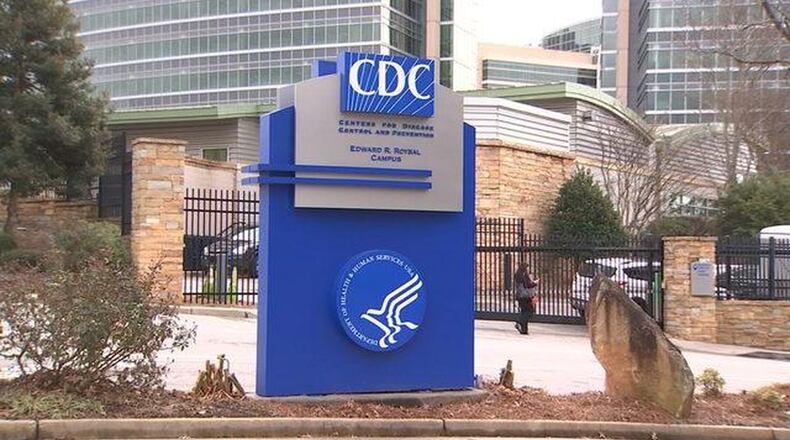On Friday, the Centers for Disease Control and Prevention in Atlanta will serve as the stage for a presidential visit in the midst of a disease crisis, a role the institution knows well.
But this time, when Donald Trump arrives, the agency won’t be basking in victory as when Barack Obama visited in 2014, days after U.S. Ebola patients walked out of quarantine, disease-free.
Public concern is still swelling over COVID-19, the disease caused by the new coronavirus. The CDC is catching flak. Botched early testing, and mixed messages within the administration, led U.S. senators to pose tough questions to CDC officials testifying on the outbreak this week. Experts have lobbed criticism in news articles and on social media.
But both supporters and critics point out that the 10,000-plus employees and contractors who work at the health agency are still able to do the high-level work the American public, and the world, relies on at moments like this.
Jeremy Konyndyk, a senior policy fellow at the Center for Global Development, tweeted a despairing line of thought about the federal response so far to coronavirus. But he advised his readers to stop blaming CDC. “The men and women of CDC are some of the smartest and most impressive people I have ever had the privilege of working with,” said Konyndyk, who worked on pandemics under President Obama.
All that matters to most people is this: Getting the right information in a timely fashion.
Public health officials must know how to decide whom to test, and how many people to test. State and local leaders must know if they need to look at closing places or events. Members of the community need advice on their own behavior.
Johns Creek resident and commercial banker Britt Faunce is one of them, as he tries to make travel plans for his family. And he’s fed up with the shifting information he sees on CDC’s website. “I expect to hear the unadulterated truth from them,” he said. However, he added, “It’s still a trusted institution. They’re the best we’ve got.”
The job now
Earlier this week, Congress approved $8 billion in funding to fight the coronavirus.
If Trump signs the bill, that money could go toward work that slows epidemics: figuring out where cases are, helping to fund the development of a vaccine; and, perhaps most importantly, trying to figure out how to keep large numbers of people away from the virus right now.
Vice President Mike Pence announced this week a major increase in the number of tests available, and the Georgia Department of Public Health has received some and begun testing, said Gov. Brian Kemp.
But some complain that such work should have been much more aggressive, much earlier.
Testing, for example, has been done on a fraction of Americans, while thousands of Europeans have had the test. The number of confirmed cases here, experts said, is clearly an undercount. That's especially a problem when the main weapon the disease has is its ability to percolate in people for weeks — the incubation period may be 14 days or longer, according to early testing — while they go about their business mildly ill or looking well.
Others say big moves are easier said than done.
When countries like Singapore, Italy and South Korea were at the juncture where Washington state is now, they “took bolder steps,” such as shutting down all schools, according to Scott Gottlieb, former commissioner of the Food and Drug Administration under President Trump. That could have a significant impact on the U.S. coronavirus outbreak, he wrote on social media. But, he continued, “The U.S. challenge is these are local decisions so local leaders often view their outbreak regionally.”
The power to issue advice, one of the CDC’s most important jobs, is overseen right now by Pence, who is heading the administration’s coronavirus task force. Some federal health officials dealing with coronavirus said they have been told to clear media interviews with his office but have not been muzzled.
The CDC's consistent advice has focused on individual actions: Don't go to work if showing signs of illness. Don't shake hands. Don't touch people. Don't touch your own face. If you cough, cough into a tissue and discard it, or cough into your elbow. Wash hands with soap thoroughly. Call a doctor or clinic if you think you may have it.
The CDC has not responded to questions posed by The Atlanta Journal-Constitution for this story.
Looking ahead
The $8 billion is part of a pattern. One common criticism is that Congress and the president — not just this one, all of them — tend to fund CDC in episodes. Politicians tend to allot the funds necessary to address an outbreak that has already happened, not funds necessary to prepare beforehand.
Epidemic funding needs to look beyond U.S. borders, said former CDC director Dr. Tom Frieden, CEO of Resolve to Save Lives. “There may be a misconception that we can protect ourselves just within the U.S. And that’s just not the way it works. The more cases there are around the world, the greater the risk will be to us.”
President Trump initially proposed several deep cuts to public funding, including the CDC’s. However, when Congress pushed back, he signed budgets without the cuts.
“I very much trust CDC,” said Dr. Carlos Del Rio, who chairs Emory University’s department of global health. “They need to be given resources to do their job. The cuts to CDC and public health security that the administration pushed in the past are not helping. As Dolly Parton stated, ‘You have no idea how expensive it is to look this cheap.’”
Others agree.
“I think one of the challenges that’s not specific to this outbreak, but we’ve seen over the last 20, 30 years, is there’s really not enough funding put into preparedness,” said Jen Kates, director of global health and HIV policy at the Kaiser Family Foundation. “The U.S. has not ever been as prepared as it needs to be. And that’s what we’re seeing.”
About the Author
Keep Reading
The Latest
Featured




